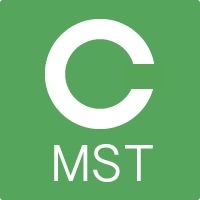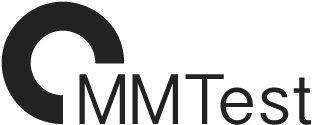 How to assess remaining vision under experimental conditions similar to real life?
How to assess remaining vision under experimental conditions similar to real life?
TASK
Find and identify a target on a computer screen. Each target is a ring with a gap in it (Landolt rings). The tested person needs to recognize where the gap is (right, left, top, or bottom). Note that this is a dual task that requires localization and discrimination.
PURPOSE
To assess remaining vision without imposing the demand for strict fixation, like in perimetry.
On the contrary, in this test the patient can make any eye movement that is necessary to solve the task, and use both eyes to let them supplement each other. Both conditions are much closer to everyday life than rigidly enforced fixation. Furthermore, it is important to test remaining vision topographically, in order to assess the function of retinal regions outside the fovea, where signs of trouble may appear first.
RATIONALE
Many patients with low vision have difficulties maintaining fixation, especially those with damage to the macula, like in AMD (Age-related Macular Degeneration). This fact introduces noise into the vision assessment data. Hence, there is a need for a simple topographic test of macular vision that does not require strict fixation.
Such test should have the following characteristics:
- is inexpensive, quick and easy to run without special expertise
- does not require using expensive equipment
- is independent of the patient’s reading skill
Our Macular Search Test fulfills all these conditions.
IMPLEMENTATION
The test consists of custom software that runs on IBM PC-compatible computers under any version of Windows (including Vista) and requires no hardware modifications.
Setup: The person to be tested sits in front of a monitor and is asked to casually look at the center of the screen. This is marked by clearly visible ring, while the rest of the screen is empty.
Procedure: When the ring goes away, a target appears somewhere on the screen. This appearance can happen in any of 32 locations. These 32 locations of first appearance are located on 4 evenly spaced rings of 8 positions each, where the outermost lies 8 degrees away from the center. Target size is always the same and is determined individually by doubling the size threshold. The threshold is determined for every patient in a simple procedure that takes less than one minute.
The target remains visible until the patient offers a correct response as quickly as possible (“Where is the gap in the ring?”). If the response is incorrect, the target remains visible and the patient can try again. The examiner enters the correct response by using the keyboard’s arrow keys. The computer saves the response latencies automatically into a data base.
Again, patients can make any eye movements they need in order to solve the task. Only correct responses are accepted.
RESULTS
We tested 115 patients with low vision and found:
- A wide variety of performance levels, with a factor of 14-16 between best and worst performers.
- Only weak correlation between performance and age.
- Only weak correlation between performance and visual acuity.
- No statistically significant correlations with diagnosis.
- The highest correlation existed between median response latency and best attainable reading speed. The latter was measured using the standard MNread test (link to Legge et al.)
We hypothesize that:
- The “search-and-identify” paradigm and reading of continuous text share an important mechanism that determines performance in both tasks.
- The factor enabling patients to perform well in both paradigms is oculomotor control and/or eye movement strategy.
We conclude that:
- The Macular Search Test (MMT) is closer to real-life visual tasks than standard clinical tests.
- In contrast to reading tests, it makes assessment of visual impairment independent of language, level of literacy and reading habits.
Because there is no fixation requirement, the MMT allows functionally relevant vision testing in a relaxed atmosphere and at a wide range of acuity levels.
PURCHASE
If you want to buy the Macular Search Test, this is what you need to know:
Price: $ 300.00 (US Dollars)
Payment: in advance
Payment mode: By bank check (US or international), money order, or by direct money transfer to the MMTest bank account
Bank: You will receive email regarding the specifics upon receipt of your order.
To order: Email mm@ski.org or call/fax +415/552-8652 (USA)
Upon reception of your payment, the software will be sent to you as an attachment to an email message, including supplementary material, like the manual.
The installation of the program is easy and automatic. It requires no special knowledge or skill.
All you need is an IBM PC or compatible running under Windows (any version from 3.1 on).
We recommend using a 15’’ or 17’’ monitor screen.
PUBLICATIONS
MacKeben M & Fletcher DC. Target search and identification performance in low vision patients (in review)
MacKeben M & Fletcher DC. (2006) “Find and identify”: Efficiency of scanning eye movements in low vision patients. ARVO, #3690
MacKeben M, Gofen A and Fletcher DC (2005) How patients scan images after foveal vision loss: scanning efficiency and SLO analysis of scanning eye movements. Vision 2005, ISLRR, London, + International Congress Series, Volume 1282, Pages 645-646, Elsevier, London
